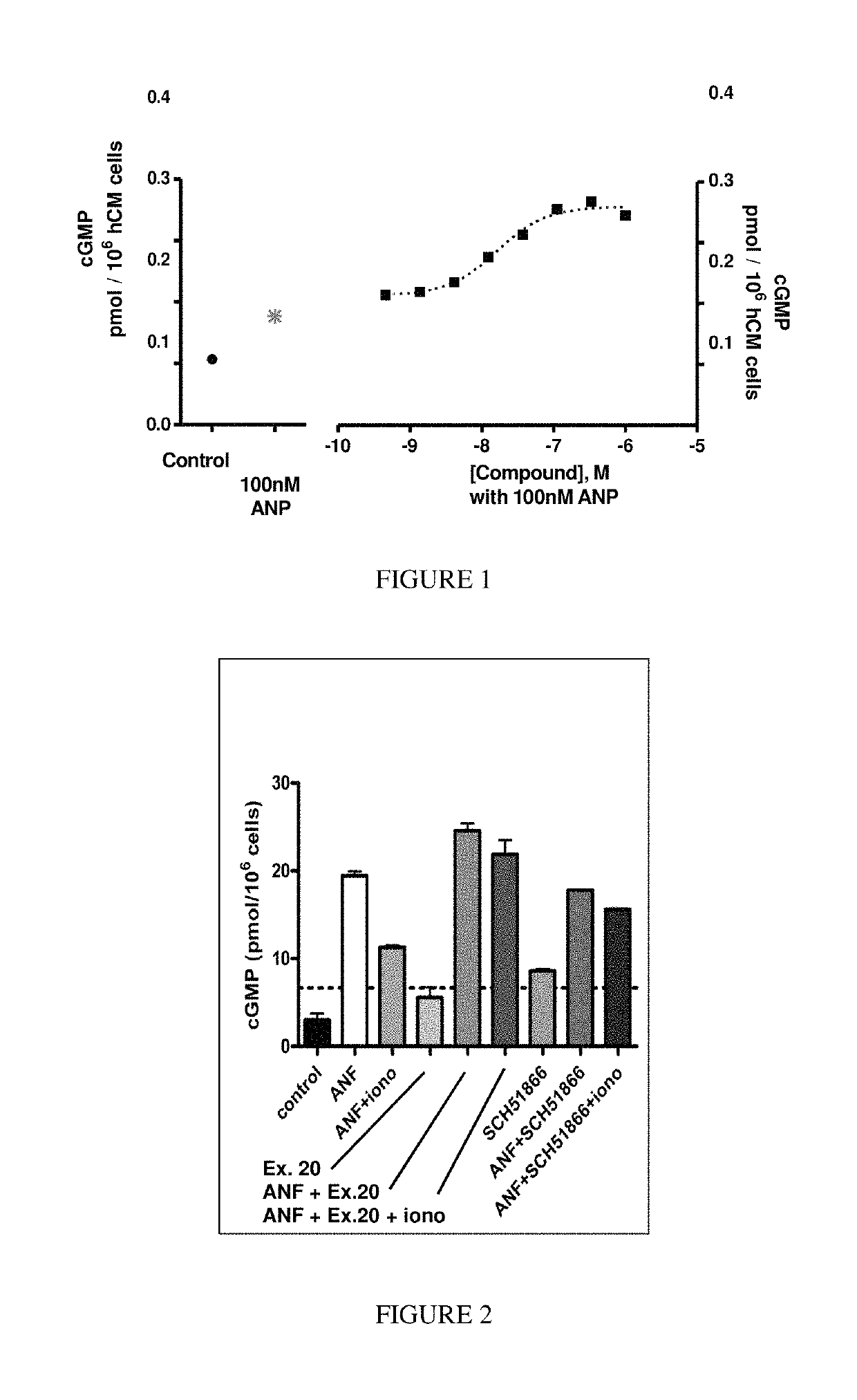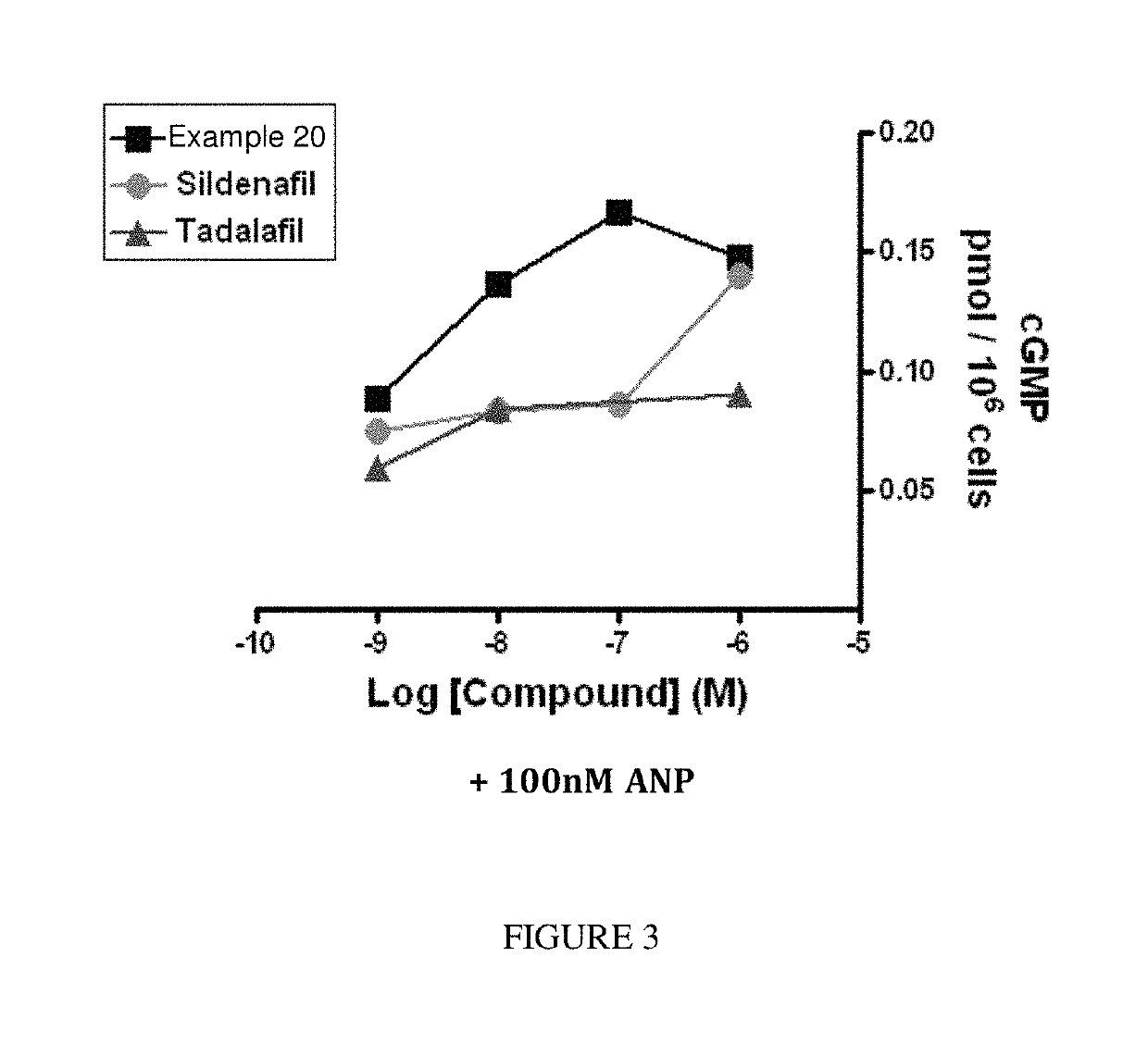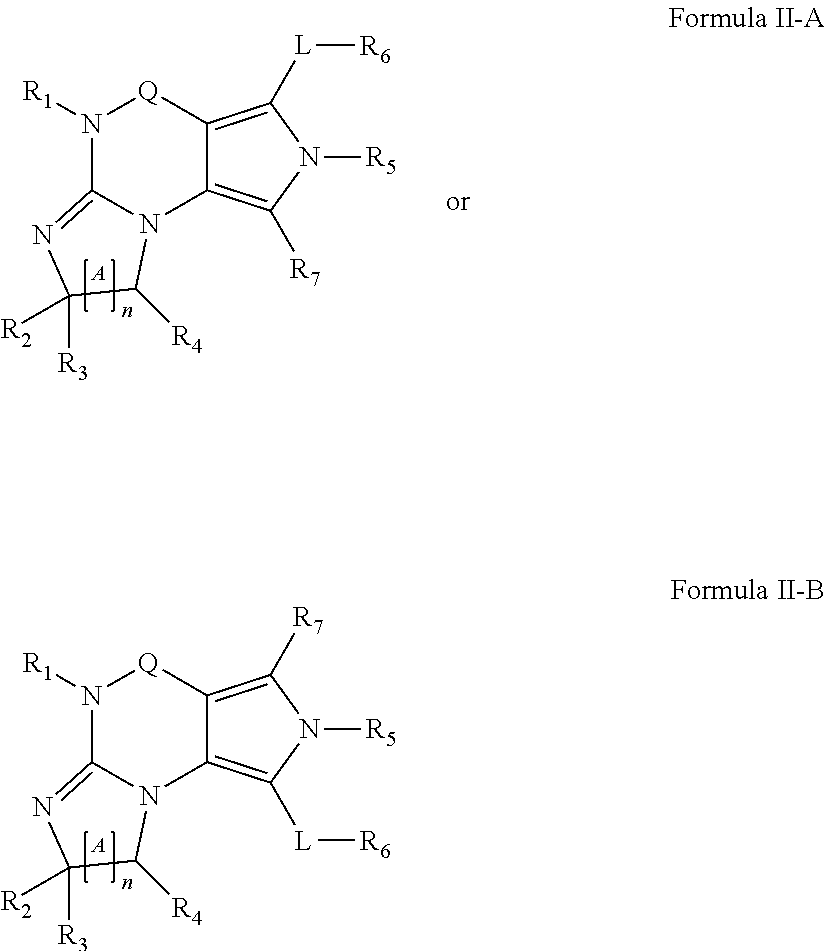Combinations of PDE1 inhibitors and NEP inhibitors and associated methods
a technology of pde1 inhibitors and inhibitors, which is applied in the field of conjugation of pde1 inhibitors and nep inhibitors and associated methods, can solve problems such as potentiated cardiomyocyte hypertrophy, and achieve the effects of negatively regulating cardiac hypertrophy, promoting maladaptive hypertrophic gene expression, and reducing cgmp levels and pkg activity
- Summary
- Abstract
- Description
- Claims
- Application Information
AI Technical Summary
Benefits of technology
Problems solved by technology
Method used
Image
Examples
example 1
nt of PDEI Inhibition In Vitro Using IMAP Phosphodiesterase Assay Kit
[1122]Phosphodiesterase I (including PDE1A, PDEIB and PDE1C) is a calcium / calmodulin dependent phosphodiesterase enzyme that converts cyclic guanosine monophosphate (cGMP) to 5′-guanosine monophosphate (5′-GMP). PDEI can also convert a modified cGMP substrate, such as the fluorescent molecule cGMP-fluorescein, to the corresponding GMP-fluorescein. The generation of GMP-fluorescein from cGMP-fluorescein can be quantitated, using, for example, the IMAP (Molecular Devices, Sunnyvale, Calif.) immobilized-metal affinity particle reagent.
[1123]Briefly, the IMAP reagent binds with high affinity to the free 5′-phosphate that is found in GMP-fluorescein and not in cGMP-fluorescein. The resulting GMP-fluorescein-IMAP complex is large relative to cGMP-fluorescein. Small fluorophores that are bound up in a large, slowly tumbling, complex can be distinguished from unbound fluorophores, because the photons emitted as they fluore...
example 2
ndopeptidase Enzyme Inhibition Assay
[1129]Recombinant human NEP can be obtained commercially from, for example, R&D Systems, Minneapolis, Minn. (Catalog number 1182-ZN). The fluorogenic peptide substrate Mca-D-Arg-Arg-Leu-Dap-(Dnp)-OH (Medeiros et al. (1997) Braz. J. Med. Biol. Res. 30:1157-62; Anaspec, San Jose, Calif.) can be used in the NEP assay. The assay can be performed in a 384-well white opaque plate at 37° C. using the fluorogenic peptide substrate at a concentration of 10 μM in Assay Buffer (50 mM HEPES, pH 7.5, 100 mM NaCl, 0.01% polyethylene glycol sorbitan monolaurate (Tween 20), 10 μM zinc sulfate. The enzyme can be used in a concentration that results in quantitative proteolysis of 1 μM of substrate after 20 minutes at 37° C. Test compounds can be assayed over the range of concentrations from 10 μM to 20 pM. Test compounds are added to the enzyme and incubated for 30 minutes at 37° C. prior to initiating the reaction by the addition of substrate. Reactions are termin...
example 3
diomyocyte Cellular Screening Assay Method for PDE1
[1130]The following screening assay is used to measure the potency of inhibitors of PDE1 in intact cells using a human cardiomyocyte (hCM) cell line developed by Promocell (Heidelberg, Germany). Promocell has devised a proprietary method for the isolation of cardiomyocytes from donated human cardiac tissue. Levels of cGMP can be measured using a competitive enzyme immunoassay (EIA) based system. Acetylcholinesterase-linked cGMP molecules compete with tissue derived cGMP for binding to cGMP-specific antibodies. The amount of antibody bound and acetylcholinesterase-linked cGMP that remains attached to an IgG-coated plate is measured by the acetylcholinesterase activity level. Specifically, acetylthiocholine is converted to thiocholine by the acetylcholinesterase enzyme, and the thiocholine then reacts with the detection reagent 2-nitrobenzoic acid to form 5-thio-2-nitrobenzoic acid, which is yellow. The 412 nm yellow wavelength can be...
PUM
| Property | Measurement | Unit |
|---|---|---|
| temperature | aaaaa | aaaaa |
| pH | aaaaa | aaaaa |
| pH | aaaaa | aaaaa |
Abstract
Description
Claims
Application Information
 Login to View More
Login to View More - R&D
- Intellectual Property
- Life Sciences
- Materials
- Tech Scout
- Unparalleled Data Quality
- Higher Quality Content
- 60% Fewer Hallucinations
Browse by: Latest US Patents, China's latest patents, Technical Efficacy Thesaurus, Application Domain, Technology Topic, Popular Technical Reports.
© 2025 PatSnap. All rights reserved.Legal|Privacy policy|Modern Slavery Act Transparency Statement|Sitemap|About US| Contact US: help@patsnap.com



